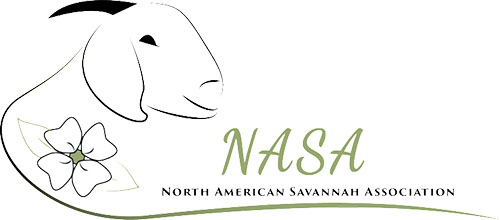The Savannah Goat In South Africa
The Savannah goat in South Africa was first recognized as a distinct breed with the formation of the Savannah Goat Breeders Society on November 21, 1993. At this time a Breed Standard was drawn up and the Society joined the South African Studbook Asso- ciation (Campbell, Origin and Development of Savannah Goats).
A common misconception in North America is that Savan- nahs are “white Boer goats”. Nothing could be further from the truth! Mr. Keith Ramsay, Registrar of Livestock Improvement in the South African National Department of Agriculture, suggests that “the breed is phenotypically different to the Improved Boer Goat…my main criteria when I recommended that they be recognized as a separate breed. Initial genetic distancing also sup- ported this. The Savannah is a more compact animal – shorter legs.”
Read The Full Article The Savannah Goat in North America
Savannah goats were first imported to North America by Jurgen Schulz late in 1994. The Schulz family had been engaged in the importation of exotic animals from Africa for many years and the surge of speculative interest in Boer goats provided the incentive for this business venture. The Savannahs were a small part of a larger shipment of nearly 500 animals which included primarily Boer goats but also some Dorper sheep.
The entire shipment of animals entered the United States through the Truman Quarantine Station in the Florida Keys. They were released later to a “USDA approved quarantine station near Goldthwaite, Texas” (Ranch and Rural Living, May, 1995) in May of the next year. The Boer goats became identified as CODI-PCI animals within the American breed registries and have contributed significantly to the development of the Boer goat in the United States.
Read The Full Article Legitimizing Savannah Goats In North America
My personal interest in Savannah goats began in 1996 with a visit to Worcester and the World Boer Goat Championships. As president of the Canadian Boer Goat Associa- tion, I was interested in meeting many of the South African breeders who had exported embryos to Canada. In my earlier capacity as a consultant to Landcorp Farming of New Zealand, I became aware of Boer goat production performance and history through the publications of Dr.Quentin Campbell; the Worcester trip provided the perfect opportunity to meet him.
Dr. Campbell’s 1984 paper on “The development of a meat producing goat in South Africa” was referenced in the prestigious Small Ruminant Research Journal (Casey and Van Niekerk,1988) which featured articles on “The Boer Goat”, “Origin, Adaptability, Performance Testing, Reproduction and Milk Production”, as well as, “Growth, Nutrient Requirements, Carcass and Meat Quality”. Almost all of the performance data cited was the work of Dr.Campbell. The data had been collected while he was “Officer in Charge” of South Africa’s Mutton Sheep and Goat Performance Testing Scheme.
Read The Full Article The Savannah Business Plan
The first two articles in this series (“The Savannah Goat in North America” and “The Savannah Goat in South Africa”) traces the history and development of the Savannah breed and identifies challenges for association development and breed promotion in North America. These articles suggest that the preservation of the Savannah breed’s integrity is dependent upon the adoption of the South African Standard as well as an understanding by all Savannah breeders that this means a unique appearance. In short, a Savannah goat should not look like a “white Boer goat”. Furthermore, it has also been suggested that if Savannah enthu- siasts fail to understand this, their selection practices could un- dermine the breed’s adaptability and survivability under ex- tensive rangeland production.
This final paper outlines the logic for a more controlled and measured approach to breed promotion and development than an “association model” normally allows. Instead of individual breeders making dozens of selection decisions in isolation, a more centralized “corporate model” is described. Such an approach re- lies heavily on all breeders understanding the science and his- tory of this “breeding company model”. It is offered as a dis- cussion paper so that we all can better evaluate its potential application to Savannah breed development and promotion.
Read The Full Plan 